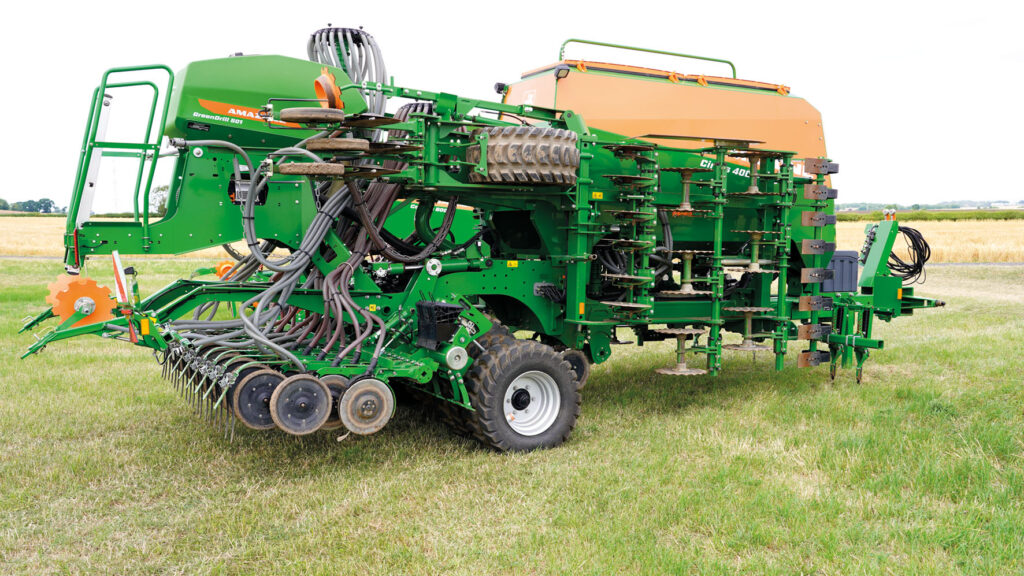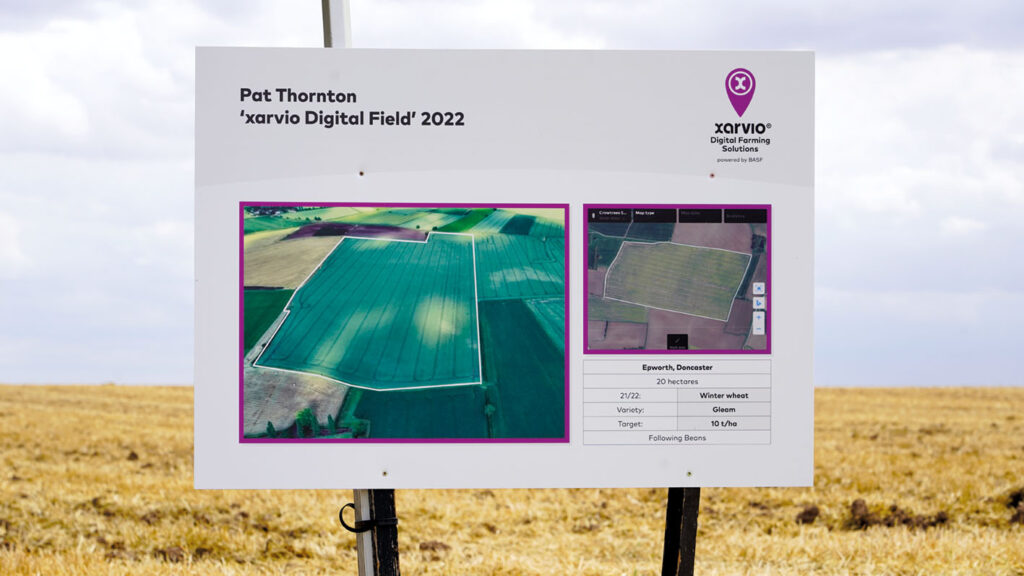Digital decision-making tool helps to deliver on-farm efficiency
1st October 2022
Combining satellite technology with precision machinery has enabled cereal grower Pat Thornton to reap the rewards of better crop uniformity and yield, by optimising inputs usage and tracking disease, on his farm in Doncaster.
Pat runs Low Melwood Farm, in Owston Ferry, in partnership with his father. The 150ha operation grows oilseed rape, winter wheat, spring barley and spring beans. Over the past season, he has been using digital platform Xarvio Field Manager, as part of a whole field scale trial with BASF, to identify historical productivity trends dating back up-to 15 years and in-season field variation on his farm, which has allowed him to alter and target his inputs more precisely.
Xarvio Field Manager was launched in 2020 as a tool for growers and agronomists to improve collection and utilisation of data through satellite imagery, to help inform decisions throughout the season.
Growers can use the tool to access historical biomass maps, called PowerZone maps, which identify high and low performing field-zones, based on satellite data. In the summer of 2021, using the Power Zone maps, Pat found that there was a fair amount of variation between his crops and was able to manipulate his seeding rates to improve uniformity in the field.
He explained that he used the digital platform to identify historically less productive areas and then apply more seed in those targeted areas.
“It is not low-hanging fruit for a farm of our size to embrace this technology, it does come at a price – but when you have power zones, that have 15 years of data you can access, there is a value to that and I was really surprised how much data was on there,” he said.
“We have also been able to use the latest in-season satellite images to target nitrogen rates to even out fields in the early spring. We were able to create application maps for our spreader, so thinner areas received a higher rate of 60kg/ha of nitrogen and thicker areas were reduced to 40kg/ha.”
He explained that he does not see the technology as a way of using less or more inputs, but optimising the best use of what they have, according to the data shown on the satellite images.
Machinery partner
Pat has partnered with Amazone precision machinery alongside Xarvio Field Manager to get the most out of his seed, fertiliser and crop protection. Amazone manufactures a range of crop establishment and crop care equipment and has been providing seeding, spreading and spraying equipment which can be loaded with a prescription map to carry out a designated task, using information from the Xarvio app.
For this project, the Cayena tine seeder and Cirrus cultivator drill were used for crop establishment and then crop care was carried out using a ZA-TS 3200 Profis Tronic spreader and Pantera 4504 self-propelled sprayer.
Amazone Ltd managing director, Simon Brown, explained that technology is going to prove ‘vital to keeping farming viable’. He said: “We can see obvious added value for farmers when you look at potential overlap savings: chemical savings; reduction in fertiliser usage; making the best use of seed by targeting zones, and in the next year or two, we will get more and more smaller zones, that’s how we will probably keep some active ingredients going, because we’re obviously only putting them where they need to be. Everything that we do is effectively working towards these smaller zones, with more control of what’s going on.”
Targeted input approach
By altering seeding rates in August 2021, Pat was able to see improved biomass consistency across his field by May the following year. He was then able to apply this targeted input approach to his fungicide programme.
Xarvio implementation lead, Luke Pollard explained: “We discussed how to target Revystar XE for Pat’s T2 application, using the latest satellite images, to produce an application map for the sprayer. We maintained the average use at 1.25 litres per hectare, but we varied from 1.0 litre in the thinner areas up to 1.5 litres/ha where there was more biomass and more green leaf area”
Luke added that using a new piece of hardware called Xarvio Connect – which physically connects to the terminal within the machinery – growers can wirelessly ping data backwards and forwards from the Field Manager system to the terminal.
“This allows a grower to, for example, send an application map for liquid fertiliser or crop protection to the sprayer terminal wirelessly,” he said.
Pat concluded: “I’ve been in this game long enough to know that we’ve been able to create many pretty maps for many years, but now a grower my size can actually utilise them,” he said. “It is not information overload, and it comes back to the profitability and efficiency of this farm and it is making an impact. We can all walk and look at our farms and assess them to an extent, but having a tool like this gives you the ability to back up your decision-making process.”




